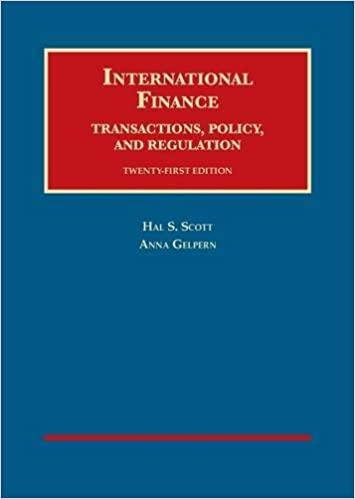Answered step by step
Verified Expert Solution
Question
1 Approved Answer
Show Computations for Parts I.II.III Figure 13.2 Figure 13.2. Analysis of an Abandonment Option (Dollars in Thousands) Figure 13.2. Analysis of an Abandon- ment Option
 Show Computations for Parts I.II.III Figure 13.2
Show Computations for Parts I.II.III Figure 13.2
Figure 13.2. Analysis of an Abandonment Option (Dollars in Thousands)
Figure 13.2. Analysis of an Abandon- ment Option (Dollars in Thousands) 3 5 6 8 10 11 12 13 14 15 16 17 18 19 20 21 22 23 24 25 26 27 28 29 30 31 33 35 Part l. Cannot Abandon After-Tax Cash Flow at End of Period Outcome Best Case Base Case Worst Case Prob. 25% 1.000 41.000 41.000 $200 -$280 2 $400 -$280 00 $500 -$280 4 1.300 s 600 -$280 Expected NPV Standard Deviation (o) art II. Can Nyandon Coefficient ot Variation CV = o / E After-Tax Cash Flow at End of Period Outcome Best Case Base Case Worst Worst Prob. 50% 25% -$1 .ooo - 1.000 -$1 .ooo -$1 .ooo $400 -$280 -$280 S 600 00 -$280 $200 goo 500 -$280 $0 NPV 1 300 -$280 SO Expected NPV Standard (o) Coefficient of Variation = CV = o / ted NPV Part l". Value of the Option Expected WV with the abandonrnent option Expected WV without the abandonment option CASE : the expected NPV without the abandonment option is positive, then NPV@ $1.348 -$1.888 1.1 83.2 NPV@ $1,348 -$088 Dont Use Sl ,089 Use $214 $14 Exrcted NPV with Value of the Option the abandonment option Expected NPV without the option CASE 2: the expected NPV without the abandonment option is negative, then Expected NPV with Value of the Option the abandonment option ote: M a NPV molect mt have an option then it woWd not be In these cases. the NPV without the abandonment option is zo.
Step by Step Solution
There are 3 Steps involved in it
Step: 1

Get Instant Access to Expert-Tailored Solutions
See step-by-step solutions with expert insights and AI powered tools for academic success
Step: 2

Step: 3

Ace Your Homework with AI
Get the answers you need in no time with our AI-driven, step-by-step assistance
Get Started


